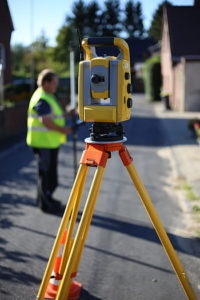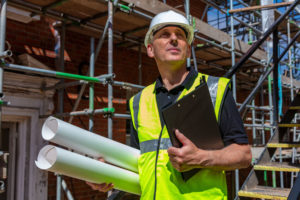Same word, different meanings
 The term surveying is used with several different professions which can make it very confusing to distinguish between them.
The term surveying is used with several different professions which can make it very confusing to distinguish between them.
Ever heard of Marine surveying? Quantity surveying? Building Surveying? Or even surveying for research studies? None of these have anything to do with land surveying or what people loosely refer to as surveying.
“Surveying” refers to the measurement and mapping of our surrounding environment using mathematics, specialised technology and equipment. When property boundaries are created, modified or identified that is termed cadastral surveying. Mining, engineering and hydrographic surveying are also other disciplines within land surveying.
In the page below, we will briefly describe unrelated types of surveying fields to demonstrate how they are different to the measurement science of surveying.
Cadastral (land) surveying is not the same as building surveying
 A registered or licensed cadastral surveyor is concerned with interpreting and navigating legal aspects of land ownership and property boundaries. You can read up on that here.
A registered or licensed cadastral surveyor is concerned with interpreting and navigating legal aspects of land ownership and property boundaries. You can read up on that here.
This is very different from what a building surveyor does. Building surveyors – also commonly referred to as certifiers – are focused on the legal issues and building permits associated with planning and construction.
Building surveyors issue demolition permits, inspect work sites, issue occupancy certificates and are generally tasked with understanding the building control process.
One way of thinking of this job is that it is the building surveyor’s role to ensure a building is safe, energy efficient and liveable. They make certain that all legal requirements are adhered to. A single building surveyor will be involved across the construction process, from start to finish, signing off aspects of the building as it is completed.
Land surveying is different from quantity surveying
 The only similarity between surveyors and quantity surveyors is that they can both play a role on a construction site.
The only similarity between surveyors and quantity surveyors is that they can both play a role on a construction site.
The clue to the quantity surveyor’s role is in some of the other names that the job sometimes has: cost manager, project cost controller, and construction economist.
In short, a quantity surveyor manages the costs on a construction project.
They are brought in at the outset of a project and, using their knowledge of the building process, they assess the architectural plans and develop an estimate of the quantity of materials that will be required to complete the project. This in turn helps forecast the costs of a project.
Throughout the project they will continue to monitor expenditures and ensure that the project stays on budget partly by keeping an inventory of costs and materials used across the life of the project.
Hydrographic surveying has nothing to do with marine surveying
 Hydrography is the measurement and mapping of the sea floor and waterways, however this is not to be confused with marine surveying, which has an altogether different purpose.
Hydrography is the measurement and mapping of the sea floor and waterways, however this is not to be confused with marine surveying, which has an altogether different purpose.
Marine surveyors inspect, examine or “survey” marine vessels. From the vessel’s structure, to its equipment, condition and machinery, the marine surveyor has to stay on top of the lot.
Hydrographers, however, will make use of cutting edge equipment like underwater laser scanners, tide gauges and sonar mapping technology to harvest valuable data about the underwater world. This data can be utilised for many different purposes – everything from conservation efforts to shipping navigation.
You can find out more about hydrographic surveying here.
Cadastral surveys are unrelated to statistical or research surveys
 We’ve all had that random phone call from someone asking us to take just five or ten minutes to answers some questions in a survey. And when many people hear the word surveying, this is what they think of.
We’ve all had that random phone call from someone asking us to take just five or ten minutes to answers some questions in a survey. And when many people hear the word surveying, this is what they think of.
While this type of surveying is very helpful in letting us chart what people think about certain subjects, it has got nothing to do with cadastral surveying.
The people who conduct research surveys might collate statistical data for political purposes, conduct market research on product preferences, or try to get to the bottom of consumer behaviour.

 Well you’ve come to the right website to learn about land surveying.
Well you’ve come to the right website to learn about land surveying.